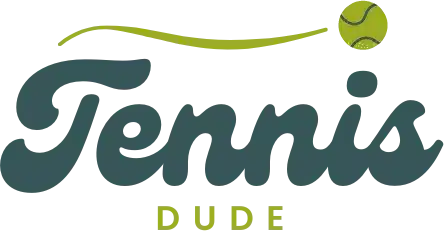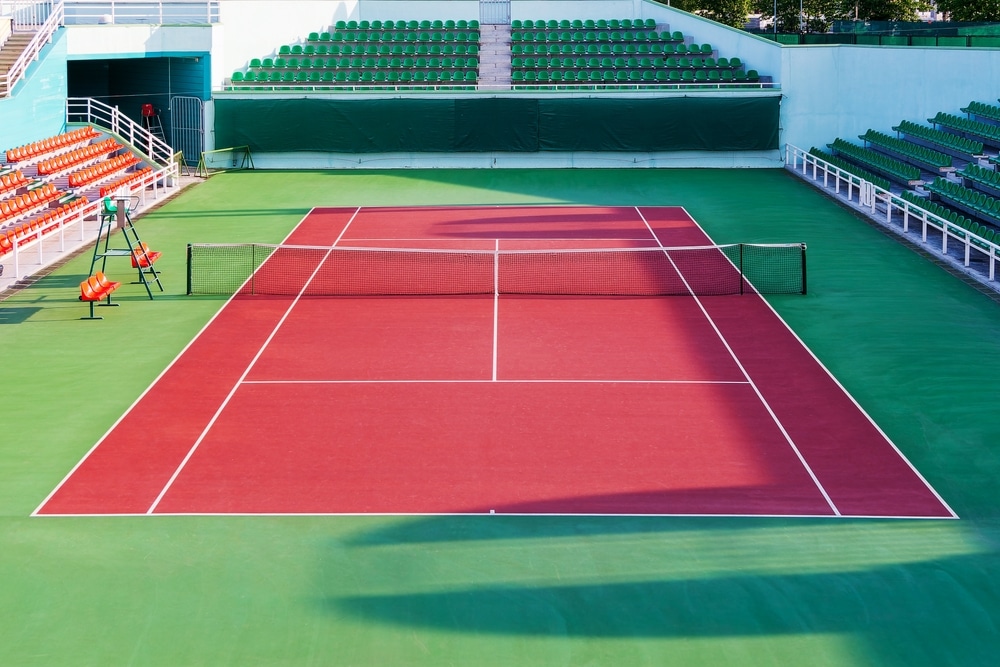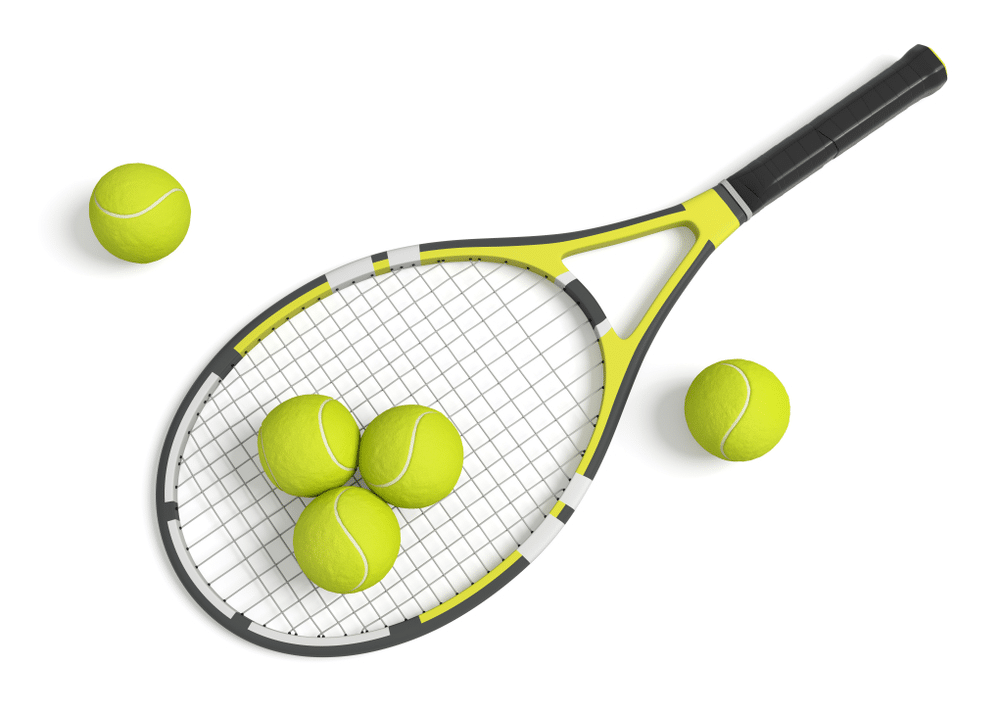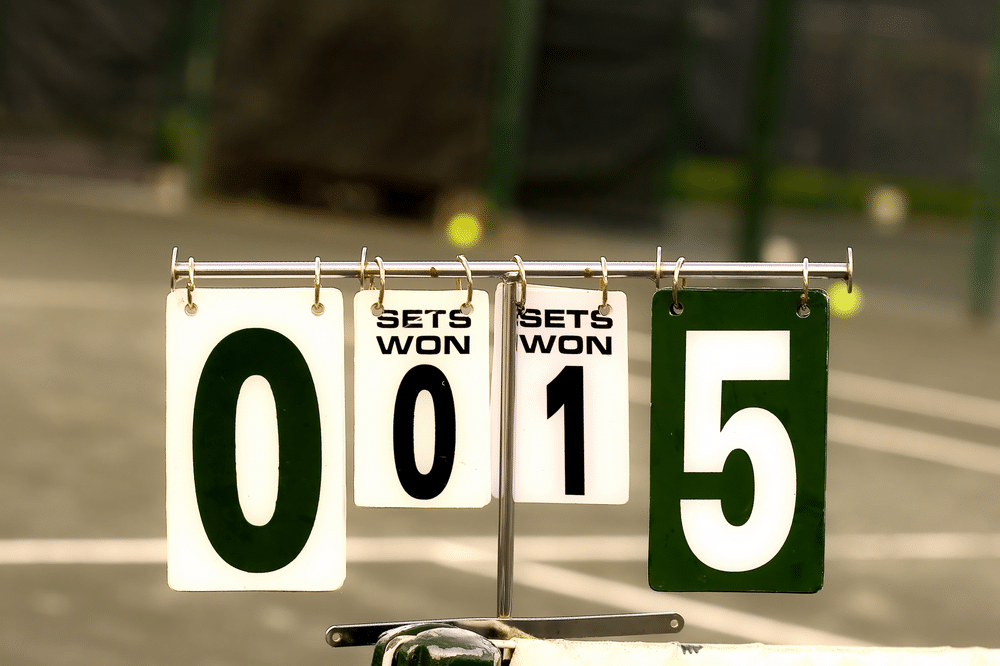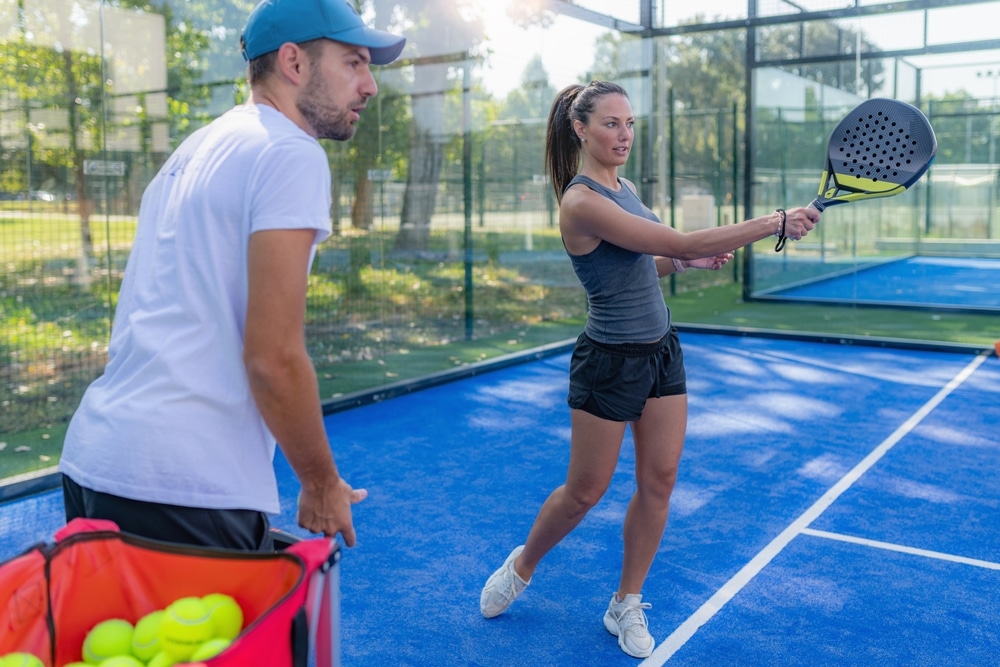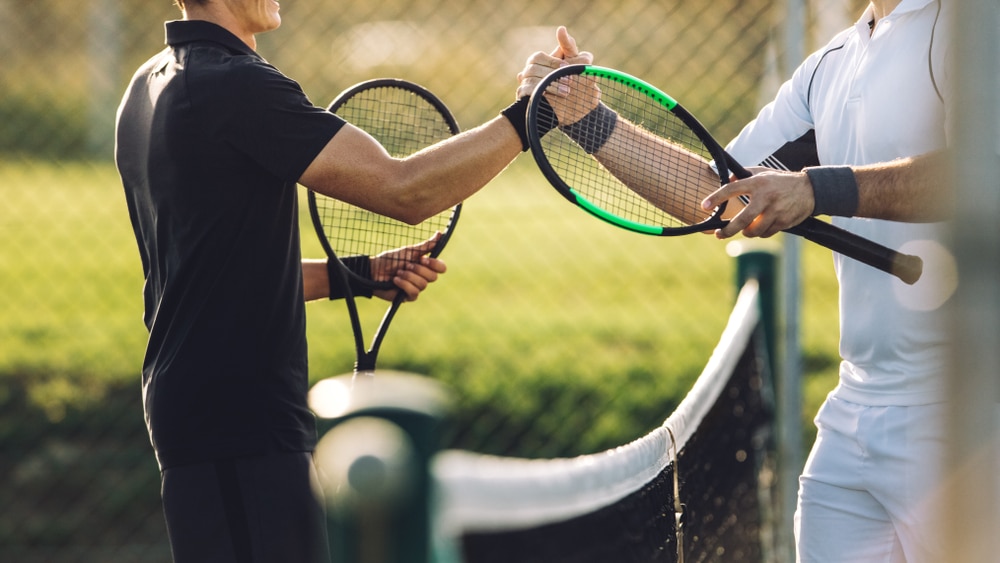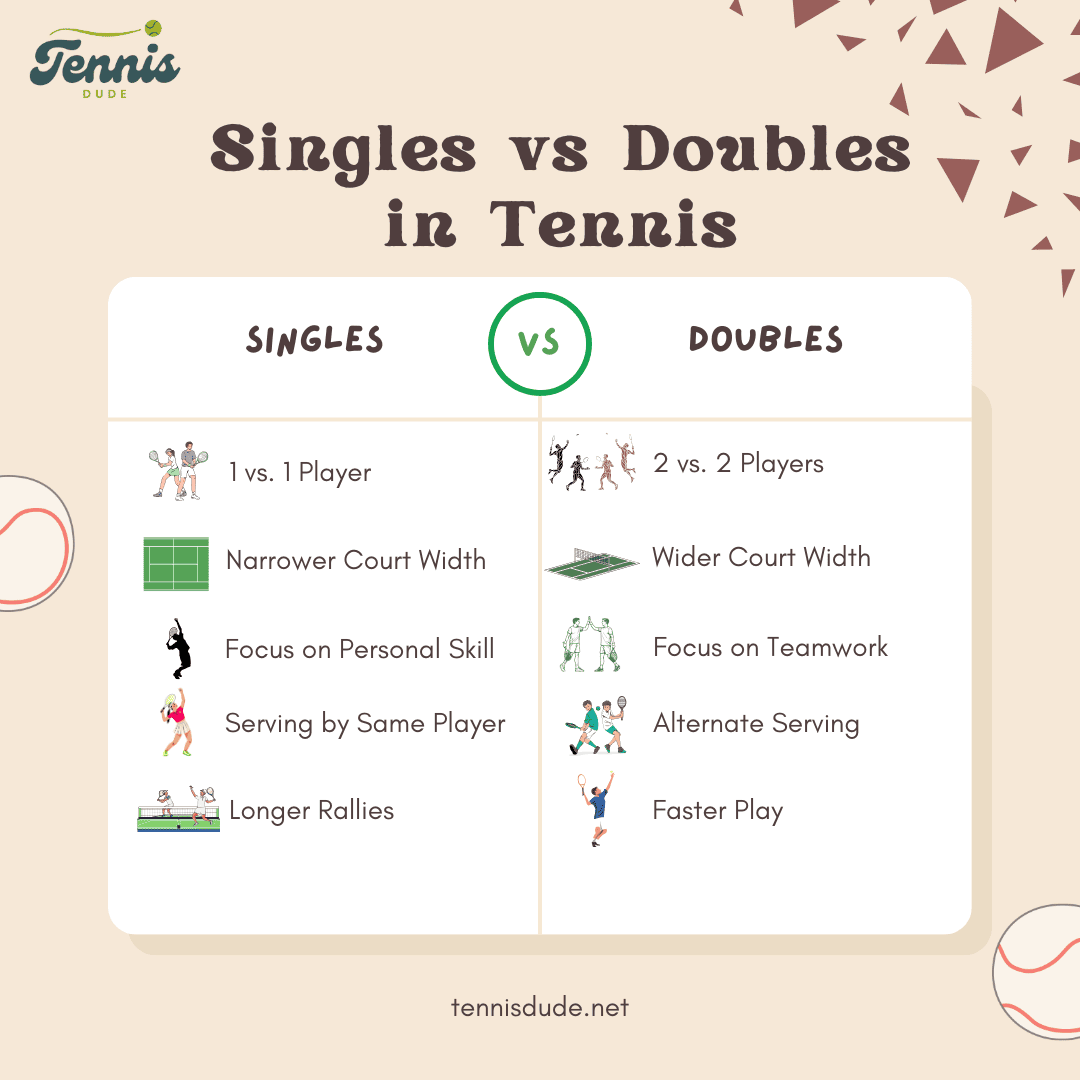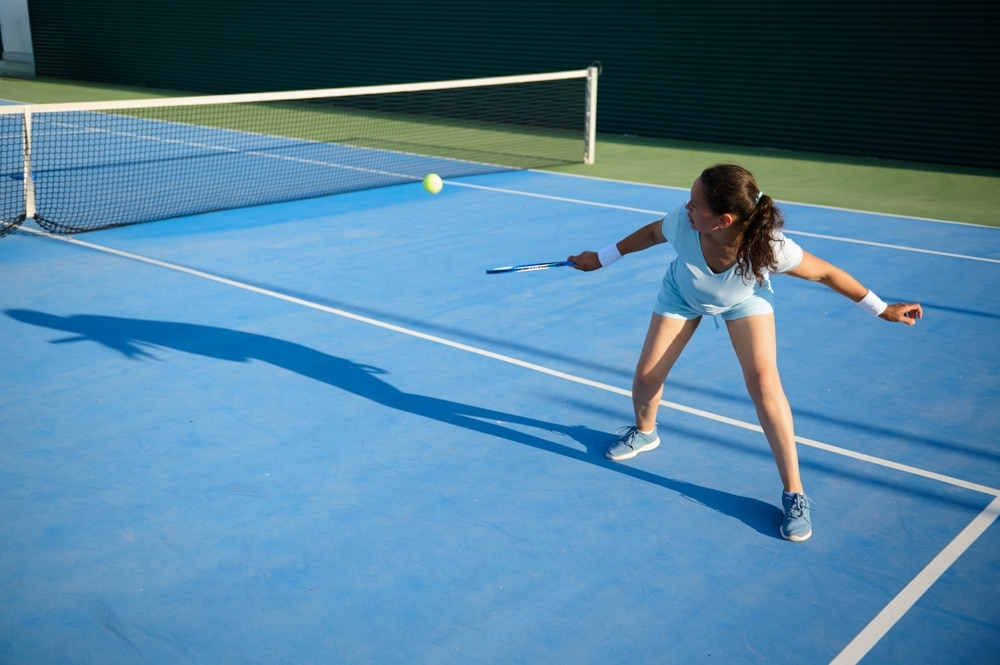Table of Contents
Tennis is an exciting sport that mixes skill, strategy, and a little bit of flair! To really get into the game, you’ll want to nail those basic moves and grips. But if you want to transform into a court superstar, mastering the rules is a must. So, tennis lovers, gear up for some fun as we unveil the essential rules beginners should know! With these tips, you’ll be ready to outsmart your opponents and ace your game in no time. Let’s hit the court and have some fun!
The Court
When you are learning about tennis rules for beginners, the court is something to focus on first. It is the place where players play the sport.
Sizes and Configuration
A conventional tennis court measures 78 feet long by 27 feet wide for singles match matches and 36 feet wide for doubles match matches. A three-foot-tall net in the middle divides the court into two equal halves.
The baseline is the outermost boundary at either end, and the service line is 21 feet from the net on each side.
Areas and Lines
There are multiple lines marking the court:
- Baseline: The boundary line in the rear.
- Service Line: The line the ball needs to cross in order to be served.
- Center Mark: A little marker that divides the court into two equal parts at the midpoint of the baseline.
- Sidelines: The court’s side borders. The sidelines for singles and doubles play are different.
Additional Markings
- Doubles Alley: Learning about the basic rules of tennis also includes knowledge about doubles alley. The space used exclusively for doubles play between the singles and doubles sidelines.
- Service Boxes: The two identically sized boxes where the server must land are formed by the center service line and the service line.
Tennis Gear
Tennis is all about mastering the basics and rocking the right gear—because, let’s be real, you can’t play without a racket and a ball! 🎾
Racket
- Your trusty tennis racket is your main tool for sending that ball flying!
- Beginners should grab a lightweight racket with a larger head size for better control and power.
- Don’t forget to choose a grip size that feels just right in your hands—comfort is key!
Balls
- Tennis balls are those bouncy yellow wonders made of rubber and covered in felt.
- They’re a bit compressed for that perfect bounce, but beginners might enjoy pressure-less balls for a consistent bounce that lasts longer.
Tennis Attire
- Looking good while playing is half the battle!
- Dress in comfy clothes that allow you to move freely, and opt for tennis shoes with non-marking soles to keep the court happy.
- Moisture-wicking fabrics will help keep you dry and comfortable so you can focus on smashing those serves!
Scoring System in Tennis
My dear tennis beginners, how would you know how to play if you don’t know about the social system? Tennis rules state that there is a specific scoring system that both teams have to follow when they start playing on either side of the court.
Points
Tennis points are scored in the following ways:
- 0 points: Love
- 1 point: 15
- 2 points: 30
- 3 points: 40
- 4 points: Game (Only if the player must win by at least two points)
Matches, Games, and Sets
- Game: The first player to score four points with a minimum two-point advantage wins.
- Set: Assigned to the first player to win six games with a minimum two-game lead. A tiebreak can sometimes be played at 6-6.
- Match: In major events such as the Australian Open, a match usually consists of a best-of-three set for women and a best-of-five set for men.
Advantage and Deuce
“Deuce” occurs when both players score 40 points. The winner of the subsequent point gains an “advantage.” The player in the lead wins the game if they win the following point. The score goes back to deuce if they lose the point.
Serving in Tennis
In terms of tennis, serving is known as who is to play first. For beginners, tennis tips are important to learn, and serving is among the basic rules.
- Serving Rules: For the first point, the server positions themselves to the right of the center mark and behind the baseline.
- The service boxes of the opposition must be struck diagonally with the serve.
- After every point, the server switches sides.
- The net must be cleared for a serve to land inside the service box.
Faults and Double Faults
- Fault: When the serve hits the net or does not land in the designated service box.
- Double Fault: The server forfeits a point if it experiences a fault twice in a row.
Let
Touching the net is considered a “let,” as the serve is retaken without penalty, provided the ball lands in the service box.
Service Motion
The ball could be served into the appropriate service box twice by the server. The ball must be thrown into the air by the server, who must strike it before it hits the ground.
Playing the Point
When the ball’s in play, it’s time for the action to begin. Every shot is a chance to keep your opponent guessing and grab those points like a pro. Ready to rally? Let’s break down the moves.
Rally
Players hit the ball back and forth once it is in play, with the goal of landing it inside the opponent’s court lines. Up until one player mis returns the ball, the point is still in play.
Ball in Motion
The ball ought to cross the net and fall on the opponent’s court. It is deemed inside if it touches any portion of the boundary lines.
Gaining a Point
- When an opponent fails to return the ball inside the court’s boundaries, the team wins a point.
- The other player strikes the net.
- The shot made by the opponent goes out of bounds.
Volley
A player who hits a shot before the ball bounces on their side of the court is said to be volleying. This technique is frequently utilized when a player is near the net.
Player Conduct
You can learn to play tennis by knowing about the player’s conduct and how one should behave on the court.
Code of Conduct
Players must follow a code of conduct that includes:
- Respecting referees and rival teams.
- Steer clear of unsportsmanlike conduct, such as verbal or racket abuse.
- Accepting and acknowledging the umpire’s rulings.
Time Limit
A set length of time (often 20–25 seconds) is allotted to players between points and changeovers (90 seconds). Point penalties or warnings could be imposed for violations.
Injury Time-Outs
Injuries and illnesses warrant medical time-outs for players, but prolonged or unnecessary holdups can end up in fines.
Sportsmanship and Etiquette
How can we forget the essential sportsmanship? It is the key to success and a peaceful game.
General Etiquette
- Prior to the game, players ought to warm up alongside their rivals.
- Players shouldn’t bother those on courts nearby.
- It is usual to shake hands after the game.
- Communication: Line calls ought to be concise and prompt.
- Before every serve, players should announce the score clearly and loudly.
Sportsmanship
Always put up your best effort and show consideration for the work of your opponents. Congratulate your rival for a successful shot and success.
Playing Doubles in Tennis
Double the players, double the fun! In tennis doubles, teamwork and strategy are the name of the game as you and your partner take on the court together.
Differences from Singles
- To make room for the extra player on each side, the court is wider (36 feet).
- Every fourth game, players rotate who serves, with each team member taking a turn.
- Effective doubles play requires cooperation and communication between players.
Serving and Receiving
- The receiving team can choose a player to receive a serve on each point, but the serve must still be diagonal.
- Players must consider the extra court width, and their positioning must change correspondingly.
Poaching
You can learn and become a pro in tennis by focusing on an important technique, i.e., poaching.
Poaching in doubles is when a net player crosses the court to intercept a return. Effective timing and conversation with your partner are necessary for this.
Strategy
A player at the net and another at the baseline are common components of doubles strategy. This allows for better court coverage and attacking possibilities.
Tiebreaks
You can come across unforeseen circumstances in tennis, such as breaks. So, my dear folks, you have to be well-equipped with knowledge related to his strategic sport.
Tiebreak Game
Don’t know what it is? Have a sneak peek.
- When the predetermined score reaches 6–6, a tiebreak is conducted.
- Players take turns serving every two points, with the one who would have served next going first.
- The first player wins the tiebreak and the set to reach seven points with a two-point margin.
Switching Sides
Tennis instructions also entail swapping sides on the court.
- During the tiebreak, players switch sides of the court after every six points to guarantee that no player has a consistent edge from one side.
Tiebreak Strategy
Here is the strategy you need when in a tiebreak situation.
- Minimize forced mistakes and concentrate on consistency.
- Remain cool under pressure; tiebreaks can be stressful times.
You can also go through a detailed guide on tiebreak rules for insights.
Recognizing Fundamental Techniques
Last but not least, check out these important techniques to achieve success in the game.
Positioning
Think of the court as your stage—stay centered, close to the baseline, and be ready to dash to the net for the dramatic moments or backpedal if the plot thickens.
- To efficiently cover the court, stay close to or slightly inside the baseline.
- Go swiftly to the net when attacking, but be ready to withdraw if needed.
Shot Selection
Mix it up like a chef with a recipe; surprise your opponent by keeping them guessing with each stroke you serve up.
- Use a range of strokes, such as lobs, volleys, backhands, and forehands, to keep your opponent guessing.
- Seek for the court’s corners to force your opponent to move and generate opportunities.
Consistency
Slow and steady wins the race; play smart, not flashy, and let your opponent be the first to mess up.
- Make accurate, consistent shots rather than striving for daring winners.
- Hold onto the ball while waiting for your opponent to commit an error.
Footwork
Think of your feet as your secret weapon: quick, agile, and always ready to adapt to any twist the game throws your way.
- Maintaining balance and posture requires good footwork.
- To become quicker on the court, work on your split steps, side steps, and fast direction changes.
Intrigued to learn more? Here are some useful tips on footwork in tennis.
In the end, apart from learning about tennis rules, you can choose a ball machine to practice and learn about rules scoring by gaining knowledge about grand slams.
Conclusion
Wrapping up, the article covered ten rules related to tennis games. If you are a beginner and need a guide to practice this game, our article will help you. Learn about the above-mentioned rules and get ready to become a pro.
